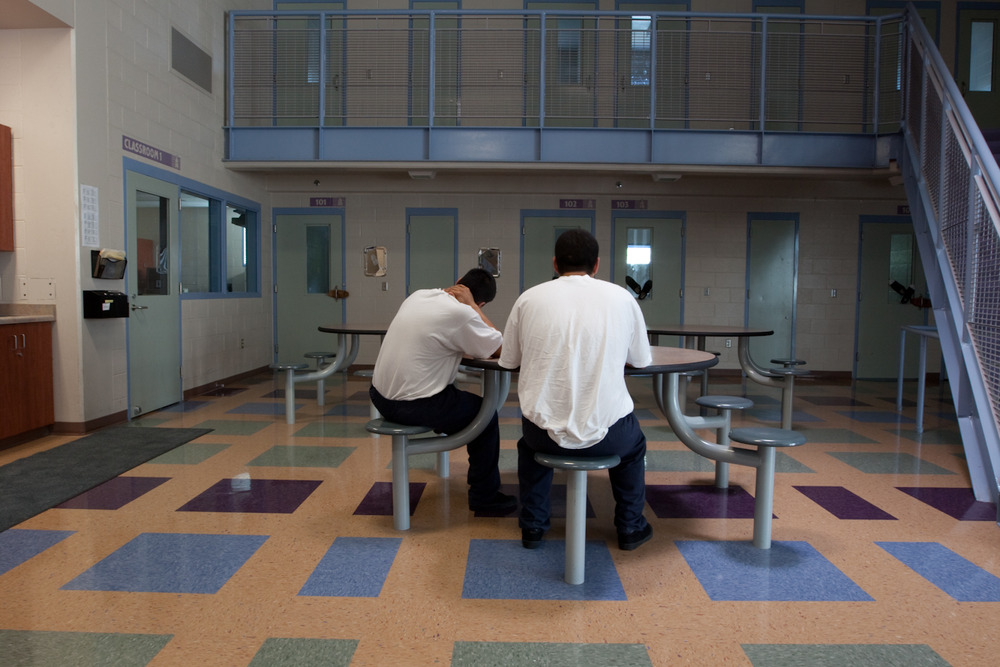“How would you want your kids, if they were in these facilities, to be treated?”
That question was raised by formerly incarcerated youth and current juvenile justice advocate James Martinez at a meeting of California’s Board of State and Community Corrections (BSCC). The BSCC is a state agency tasked with overseeing jails and county-level juvenile facilities in California. In early November 2022, the board’s Executive Steering Committee, met to begin rewriting critically important rules governing juvenile camps, ranches and halls. Through his public comment, James presented the committee with a heavy challenge whose gravity was felt throughout the length of the meeting.
Over the next two days, the committee reviewed regulations directly impacting thousands of detained youth in California. These regulations serve as minimum standards for how facilities treat youth; their impact is far-reaching, covering every aspect of youths’ lives from the food they are served, to the time spent outside of their cells, to how facilities prevent suicide.
Previously community-led activism and engagement delivered the biggest improvements in regulations during review processes. This process appears no different. What was salient in November’s committee meetings was the engagement from the committee and from public commenters — all from different backgrounds coming together to discuss concerns relating to facility conditions and youth treatment.
This year’s committee is a diverse group of professionals and experts with both lived and practical experience who will be offering their final recommendations to the BSCC for approval pending their ongoing revision sessions. The 13-member committee was created by the BSCC to review and revise CA’s Juvenile Titles 15 and 24 Regulations, a process that occurs once every four years. Having members on the committee who were incarcerated during their youth adds necessary experiential knowledge of how regulations affect youth inside juvenile facilities.

Courtesy of Center on Juvenile and Criminal Justice.
Grecia Reséndez
Equally important is centering the voices of formerly incarcerated youth, their loved ones, and community members in these discussions. But during November’s meeting, the committee didn’t make it easy for their critical voices to be heard. Meetings were long, lasting from 9 a.m. to 5 p.m. and accompanied by three-inch binders full of meeting materials. The two-day session was held in Sacramento, far from many of the communities most affected by youth incarceration; the meeting was also live-streamed for both days. Yet numerous participants followed along, virtually and in-person, some driving hours to attend and give public comments on vital issues, including staffing, safety checks and emergency suspension of standards.
Several formerly incarcerated youth from California’s state-run juvenile correctional facilities, the Division of Juvenile Justice, or a county-run juvenile facility showed up to speak on their experiences.
We were heartened to see the committee members engaging with many of the public commenters, but it did mean that the committee made slow progress. The few updates the committee agreed on were grammatical ones. Significant items got pushed into new subcommittees to be discussed in future meetings that started on March 10th.
Public comment highlighted the need for mental health counselors and staff in juvenile facilities to support assessments and intakes. Public comment participants also called for programming improvements, regulations around the timing and frequency of mandatory shutdowns during staff changes and an end to long periods of isolation for youth. During public comment, speakers repeatedly referenced revision recommendations by Fresh Lifelines for Youth and the Anti-Recidivism Coalition that were based on surveys of formerly incarcerated youth and their family members, as well as recommendations by the Youth Law Center and other statewide community-based organizations.
Many recommendations made during public comment were disappointingly reminiscent of the BSCC regulation revisions process in 2018. Time and again, many, many, many have recommended banning the use of pepper spray in juvenile facilities including most recently California’s Attorney General Rob Bonta in a letter sent to the BSCC. And yet California has failed to take action; there have always been excuses about why now is not the time to act.
“Why are we still pepper spraying other people’s kids? Why is that still happening in our facilities? We should be caring for them. Our elders once told us ‘Nobody cares what you say until they know you care.’ Young people will feel that. They don’t care what we gotta say. They don’t care about none of that. They’re not going to care until they know you care. So we gotta get this right moving into the future y’all… get it right today so we don’t have to come back,” Edgar Ibarra-Gutierrez, MILPA leadership and program coordinator, told the committee.
The use of pepper spray and unnecessary staff use of force was a top concern for 54% of youth surveyed by Fresh Lifelines for Youth. An ACLU report in 2019 found that between January 2015 and March 2018 alone, youth in state and county facilities were exposed to pepper spray over 5,000 times. Citing physical and psychological dangers of its use as a weapon, that same report recommended a complete ban on pepper spray in juvenile facilities.
“The pepper spray get[s] into the innocent bystanders — the whole place end[s] up choking. Also pepper spray really burns if [it] gets in your eyes–most of the time deputies would tell you to get into the shower using hot water to wash off burning pepper spray, when that obviously doesn’t work,” one youth interviewed by Fresh Lifelines for Youth said.

Courtesy of Center on Juvenile and Criminal Justice.
Tina Curiel
The BSCC needs to listen to overwhelming concerns shared by those with lived experience and legal advocates throughout the state and ban the use of all chemical agents while concurrently mandating de-escalation and physical intervention training. Thirty-five states and several California counties — including Santa Clara and San Francisco — have banned the use of chemical agents. The BCSS can learn best practices and training from them and incorporate alternatives to pepper spray.
The committee will resume its revisions process on March 23. In order to make meaningful progress, staff must continue to provide opportunities for people directly impacted by the juvenile justice system to advocate and engage. During November’s meetings, public speakers from the community voiced concerns about the process itself. They criticized the committee for coming to a decision about a topic before offering public comment on it. They also noted the committee’s decision to only allow public comment after they discussed a full article meant that some speakers with prepared comments were not able to share at the relevant time while others feared their comments were “lost” amidst so many sections. Listening to community feedback will help the BSCC make equity-centered changes within its process.
California has the opportunity to serve as an example of juvenile justice reform for the rest of the country. This is the state’s chance to move away from a system of punishment and towards a behavioral health-focused model. Juvenile justice advocates, community leaders and formerly and currently incarcerated youth and their families are all invested in this vision. This is the state’s chance to listen to those fighting for loved ones currently held in a juvenile facility. The outcome of these revisions, and therefore the entire administrative process involved in creating them, matter to them on a personal level. The committee should heed their recommendations. The community of family members and their supporters is organized and ready for the next committee meeting to make sure this process is done fairly and with respect for youth. We will be watching.
***
Grecia Reséndez is a juvenile and criminal justice advocate, mother, scholar and the relative of multiple formerly incarcerated individuals. She is a policy analyst with the Center on Juvenile and Criminal Justice in San Francisco.
Formerly-incarcerated activist and poet Tina Curiel is also the child of a previously incarcerated youth. She is a communications and policy analyst with the Center on Juvenile and Criminal Justice in San Francisco.






























